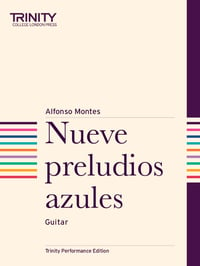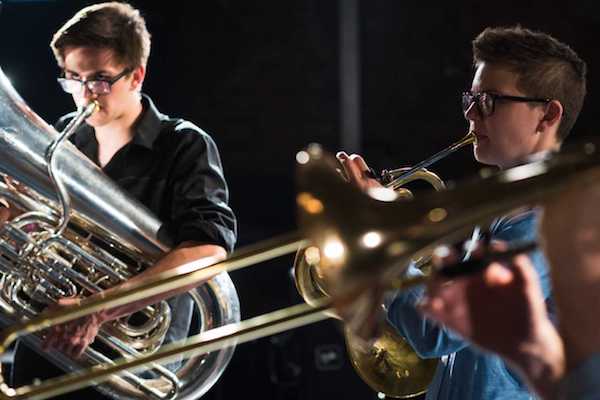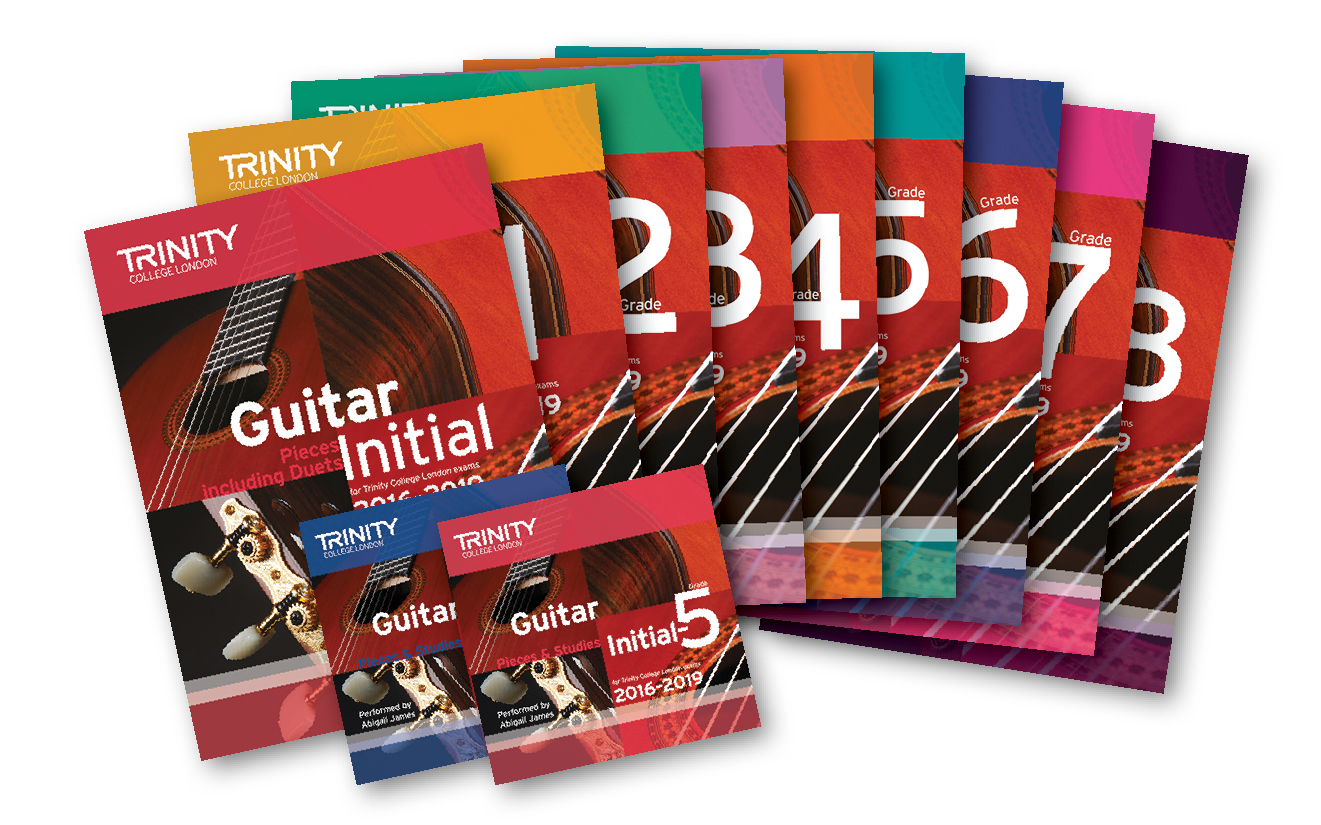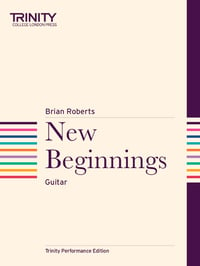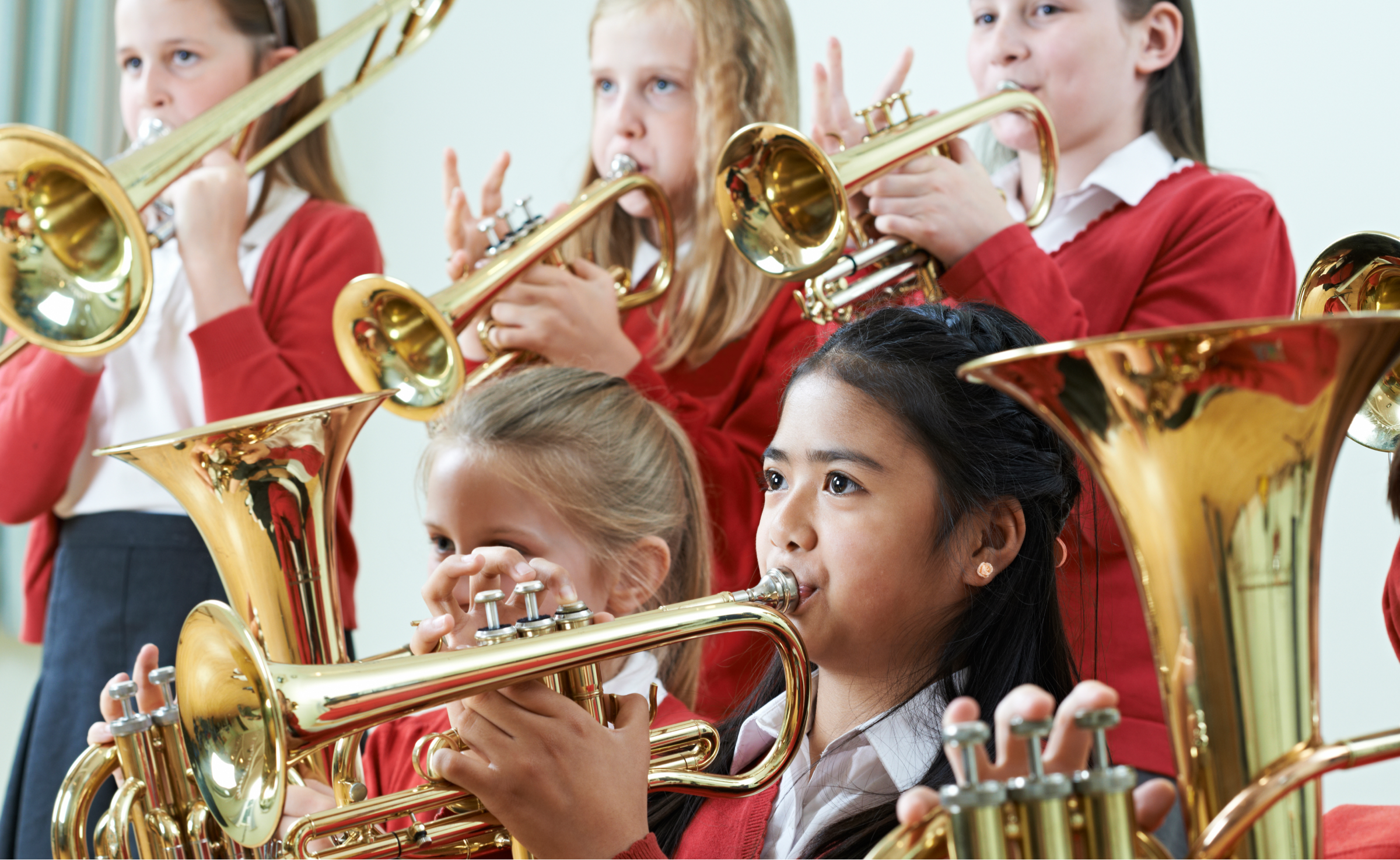Alistair Smith: Atmospheres & Adventures — performance notes
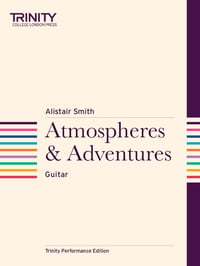
Alistair Smith is a guitarist, composer, teacher, writer and sound therapist living in London. He enjoys a diverse musical career, performing in venues and festivals around the UK and Europe, and has played live on BBC Radio 2 and BBC Radio London. Alistair’s compositions have received performances in Britain and Canada, including a variety of commissions and collaborations for short film and dance. Atmospheres & Adventures is a collection of 20 pieces for solo guitar.
Performance notes
Altostratus
Playing intervals of a second across two strings forms the basis of this piece. The slurs added to this idea in bars 3 and 11 may require some attention, and some of the three-note chords that grow from this idea as the piece progresses may cause a further challenge. The transitions between some of these chords involve position shifts, which are necessary to achieve the desired fingering.
The changing time signatures shouldn’t pose a problem as these bars are fairly simple in nature.
Bestowal
The central passage of broken chords should be the primary focus when learning this piece. Right-hand fingering should be chosen to avoid complicating some tricky transitions between the chords. Left-hand fingering is also essential to the success of this section.
The closing passage of dotted rhythms is useful for learning this rhythm, and some of the material used should otherwise be familiar from the beginning of the piece.
Betelgeuse
Accidentals are numerous in this piece and may seem a little daunting at first. Swift position shifts are also an important feature throughout, the most demanding of these appearing towards the end of the central semiquaver passage. The suggested left-hand fingering will help guide you to the correct positions.
Chords revolving around the B string, with notes played on both adjacent strings are another central part of the material. Achieving these while maintaining a clear and resonant B string is the aim. This, again, becomes more challenging in the semiquaver section with the chord played up in 10th position.
Calderas
The thumb gets a good workout in ‘Calderas’, as it presents the main thematic material from the start and then drives the music forward with a steady thumping pulse for half the piece. As the thematic material is taken by the fingers, the syncopated upper part interlocks with the bass pulse. The whole first half is a useful study of the off-beat rhythm.
As this two-part arrangement evolves it becomes increasingly demanding, requiring the player to shift positions and fingering. This reaches its apex in bars 31–37. In the subsequent passage, where the two parts are built up again in the bass register, try to maintain clear articulation between the thumb and fingers.
Clicking Tock
‘Clicking Tock’ makes extensive use of the syncopated rhythm from bar 3, between the thumb and fingers. It may be necessary to examine this dotted rhythm carefully so that it is clearly understood.
Bars 9 and 18–21 could be a little confusing at first glance. Taking care over which string and fret the thumb notes are played is key to success here, especially where the thumb notes are in the same range as the finger notes.
Some of the slides, beginning at bar 22, span a good length of the fretboard. Look ahead to the desired fret before sliding, to ensure accuracy.
Cumulonimbus
Similar to ‘Altostratus’ in key and in the use of intervals of a second, this is a little more challenging. Rapid four-note arpeggios are built from the opening intervals, beginning in bar 3. This and all variations of the semiquaver arpeggio should be practised very slowly with the correct left- and right-hand fingerings. When you can produce all four notes with a degree of clarity and comfort, only then try speeding them up to achieve the desired effect.
The three-note pattern echoing from this arpeggio in bar 8 would be most easily handled by focusing on maintaining the semiquaver rate of the previous bar, rather than trying to count the beats.
The chords in bars 9–12 require careful attention to left-hand fingering, as does the slur added to the last of these chords in bar 12.
Daydrifting
‘Daydrifting’ is almost entirely in second position, giving you a good opportunity to become accustomed to the fingering involved.
If the slurs present any difficulty, it may be necessary to practise them without the bass notes at first. This will also help prepare for the slurs occurring from the chords at the end of the piece.
The third line, with the thumb and finger notes on adjacent strings, should be played with care given to the dotted notes so that they last the length of each bar. In the fourth line, bar 14, there is a rest, written to aid the move to the F# in preparation for the next bar. In bars 15–16, the second-string D must be sustained for its full value while you play the G and F# in the bass.
De agua azul
The whole-tone scale predominates in this piece, making it a useful introduction to this sound world.
The changing time signatures should perhaps be counted out loud at first. The stretch to G-sharp with the 4th finger is worth extra attention, as is the B-flat to D interval in the penultimate bar.
First Flight
Playing chords across an order of strings that seem to contradict the direction of pitch can be confusing. So take care from the outset to strike the correct strings. Finding notes in new positions can also pose a challenge, the recurring C-sharp on the 3rd string being the most obvious example. Left-hand fingering should also be carefully considered, as there are plenty of position shifts.
Foxwalk
‘Foxwalk’ moves between first and second position, which is indicated by the suggested left-hand fingerings. The chords in bars 13–15 should be practised carefully, as these pose the greatest challenge, both in execution and in transitioning between them. The 2nd finger can be held on and used as a pivot between the two chords.
Frühling
Being in A Major, ‘Frühling’ encourages you to become more comfortable with sharps, although G-sharp isn’t actually used in this case. There are also shifts between first and second position. There is a long passage in second position from bar 9. At the Più mosso, for the closing passage, a variation of the opening material is played in alternation between broken chords and intervals. For this, the 2nd finger can remain on the third-string A throughout if preferred, in preparation for the final chord.
Immram
in memory of Lawrence Gibbs
The immediate thing to take care of here is the tuning of the G string down to F-sharp. It would be useful to scan through the piece to locate all notes played on this string and confirm their new position on the fingerboard. This includes the chords appearing, for the first time, in bar 18.
The articulation of the rhythm between thumb and fingers should also be approached with care and perhaps practised slowly at first to gain confidence. The thumb frequently has to jump across the strings from the first to the second beat of each bar, beginning in bar 13. This adds further difficulty to the articulation of the rhythm and again, should be played slowly at first. The slurs and ornaments in bars 38–44 may need some extra practice. After this section, the rhythmic pattern is reversed between thumb and fingers. Appropriately paced, careful practice is again advised.
Lost Horizons
Frequent position changes are the main feature that may need care here. This feature also prompts the need for added attention to left-hand fingering, some of which is suggested in the score. Practical choices of fingering will aid in the shift of positions.
The first bar requires all notes to be fretted in second position. Subsequent appearances of this material necessitates different choices of fingering due to variation of harmony. Take care to notice these variations and apply appropriate practical fingering, keeping in mind what comes next. This a good general principle to adhere to for this piece.
The Pride of Peleus
‘The Pride of Peleus’ provides some practice at playing B-flats as well as a few accidentals.
The use of the 4th finger to play the D in bars 10 and 14 is necessary to prepare for the following bars, where a B-flat and F are needed respectively.
Bars 16–17 and bar 21, where the key momentarily fluctuates, are the most technically demanding passages. In bars 16–17, care should be taken to maintain the bass notes for their full length while maintaining practical fingering above. Conversely, in bar 21, it is necessary to hold the G-sharp until the end of the bar while articulating the bass beneath.
The pizzicato bar immediately after this will most certainly need extra attention — practise this both on its own and in context with the surrounding bars.
Pentire Point
Once the bass E string has been tuned up to F-sharp, the G-sharp and A played on this string should be located prior to starting the piece.
The opening figure may be a challenge for some players as the four-finger stretch can be tricky to hold while maintaining the open E string above. There may be other sections where left-hand fingering may interfere with the open first string, which is played throughout.
There are some quick chord changes, the most noticeable being from bars 11–12, repeated in bars 19–20. The fingering change in bars 14–15, repeated in bars 22–23 may require careful attention.
Sylvanus
This is a beginners’ piece with lots of accidentals, which should help you become accustomed to encountering them. There are numerous instances of the G-sharp played by the 4th finger, the most tricky being in bar 6, with the jump from the 4th string E to the 6th string G-sharp.
For the right hand, the focus is the alternation of thumb and fingers, which play separately for almost the entire piece, only acting together on the chords in bars 12 and 16.
Through the Half-light
‘Through the Half-light’ contains frequent use of the 4th finger for G and D in the opening and closing sections. This is to allow other fingering to be achieved, such as the bass F in the first bar. The bass notes in these two sections should be held for their full durations to give the sense of a connected legato line. The student should take care of the shift to 3rd position in bar 6.
Resonant, sustained chords are the aim of the central section and the use of the 4th finger is employed again to allow the bass F.
Un petit pas
There are two main challenges in this piece. The first is to sustain the notes played by the thumb for their full length, especially those on strings adjacent to notes played by the other fingers, as in bars 6 and 7. The second challenge is some of the left-hand fingerings and position shifts. The most notable of these are in bars 6–8 and in bars 19–20, where the stretch from the C-sharp to A in second position followed swiftly by the move to D and F in first position may pose a challenge.
The Waves
As this piece is in G minor, you might find it useful to locate all relevant B-flats and E-flats prior to beginning practice.
The first half of the piece shouldn’t present too much difficulty as long as the flats and position changes are observed carefully. The partial barres in bars 20, 29 and 37 are worth noticing.
From bar 50, with the broken chords in the lower register, some challenges arise, beginning with the slide from F to G in bars 50–51 marking the transition in chord and position. This repeats several times with variation in this passage.
The broken chord ending this section in bar 65 and leading to the subsequent E-flat chord in the next bar is the most challenging point so far. It is recommended that each bar be tackled separately, then together. The quick movement of the 4th finger up the first string from this E-flat chord is another point to take note of.
At the end of the piece there is a five-fret stretch in bar 85. After this, in bar 89, there follows a very quick position shift up to 10th position.
LXXIV
The opening motif with slide and right-hand harmonics becomes part of the rhythmic section in the middle of the piece, so it is worth spending some time mastering it at the outset.
The main thematic chord pattern and its ensuing 6 development all revolves around an open B string and care should be taken to adhere to this. The development includes numerous position shifts of three-finger chord shapes. It is recommended that the player become familiar with these shapes and practise them in isolation. Attention is drawn to the second phase of this development from bar 33, in which the music heads in a different direction.
The rhythmic chord pattern with percussive effect initially uses a partial barre, with only the 6th string left open. Please take note that the second appearance of this material, from bar 49, uses a full barre.
Performance notes by Alistair Smith



